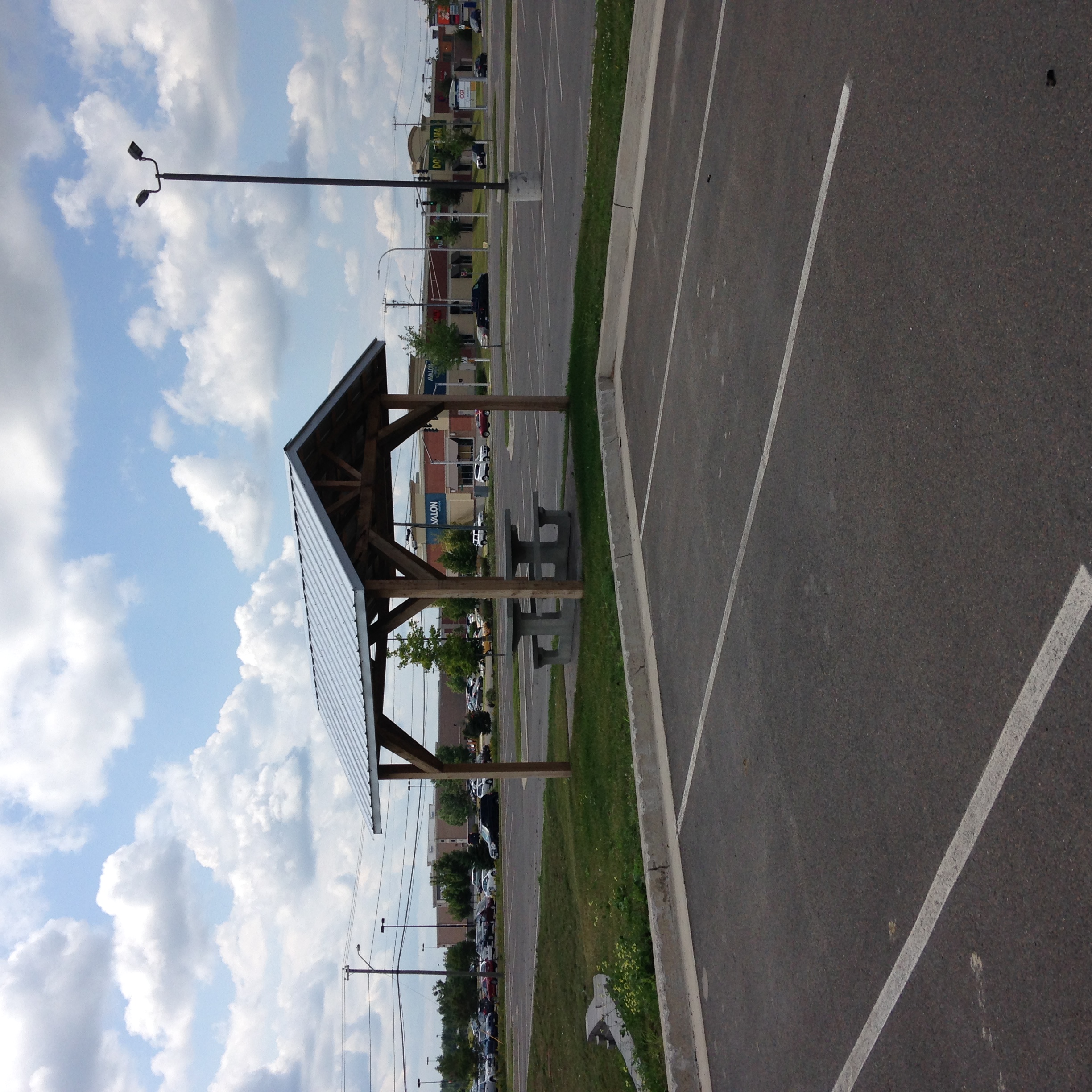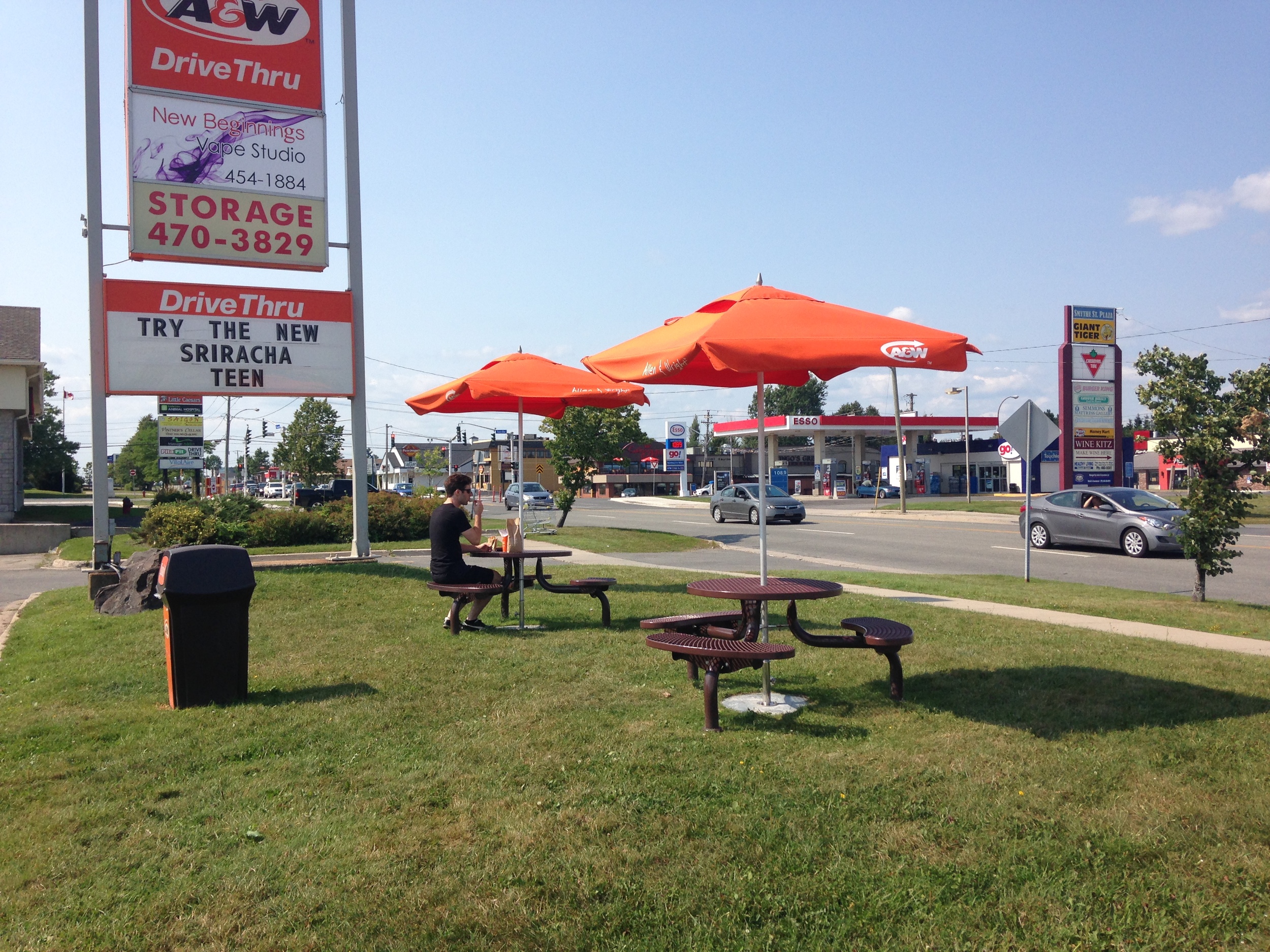Places Where I Don't Want to Sit
Last spring, Joe Minicozzi and I encountered this beauty:
We live in cities starved for good public space. There are so few spots in North America where you can sit comfortably (ie. safe, shaded, with a good perch/chair) and enjoy the city around you with zero expectation of spending money. It's a fact made more tragic when you realize how simple and cheap it can be to create wonderfully sittable space. Instead, many of our highest-potential urban environments are built to explicitly un-sittable standards using defensive architecture.
Good Money After Bad
Other times, we do try to create linger-worthy public space and fail spectacularly. We often demand developers throw some cash toward green space or public amenities in order to get approval for construction. You see it all the time in subdivisions with exquisite landscaping, roundabouts, and benches that are only appreciated from behind a car window.
The idea of asking developers to contribute to public space is excellent (perhaps essential). By the looks of it, this has resulted in millions upon millions of dollars invested in pavilions, seating, greenery, and water features. Too bad that investment keeps ending up in places where no one would actually want to linger.
Places I Don't Want to Sit
I don't want to sit at this gazebo in an office park next to a power center. Not even the neighboring pond and fountain feature can entice me.




I don't want to sit at this drive-thru, while staring at a stroad (street/road hybrid). Although, for irony and your enjoyment, Ryan and I did sit here for lunch (ie. the person in this photo is an actor). "When you close your eyes, it kind of sounds like the ocean."


Places I Would Like to Sit
Imagine if we took all that wasted investment and directed it toward building more spaces like this.
I would like to sit on these amazing steps at the Halifax Farmers' Market. No purchase necessary.
I would like to sit at the tree patio here in Fredericton.


If you look carefully, there is money being spent all over the place on public space. A good chunk of that is wasted in environments where there is an excess of space and a shortage of people. If you are a city official that negotiates these kind of transactions, please fill me in. Why is this so messed up?
For the rest of us, I'd love to see some tweets of #PlacesIDontWantToSit and your favourite #PublicSpaceDoneWell
Editor’s Note: Check out other articles in the series—as well as social media responses using the hashtags mentioned above—here.
About the Author
Gracen Johnson is the Director of Content & Contribution at the Incremental Development Alliance. Since completing her MPhil in Planning, Growth, and Regeneration at the University of Cambridge in 2013, Gracen has spent years engaging with bottom-up city building herself.
She met the IncDev team via her online storytelling as a proactive neighbor in a small city on Canada’s east coast. Her writing, speaking, videos, and urban interventions inspire regular citizens to invest in their neighborhoods in the creative, makeshift ways that make a place feel loved and lived in.





Varsha Gopal is an architect from Chennai, India. She joins Norm today to discuss discuss two research projects she recently conducted in her city and what they taught her about thriving cities, urban design and community engagement. (Transcript included.)